What is the difference between a DC ammeter and an AC ammeter
Ammeters are devices for measuring the strength of the current, the magnitude of the current. These devices are always connected in series in the circuit in which the current measurement is required. Ammeters, unlike voltmeters, have extremely low resistance when connected to a circuit, so the measurement process would have minimal effect on the readings. So ammeters are used to measure the values of currents.
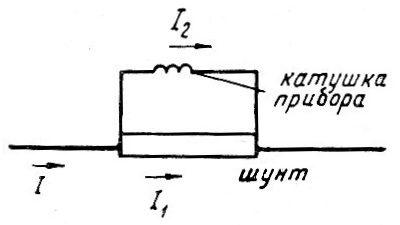
When measuring significant currents, an unacceptably high current would flow through the working coil of the device, which would require a complicated design, therefore, to safely measure large currents, one resorted to maneuvering the working coil of the device so that the unmeasured current flows through the coil itself , but only a small part of it. That is, the measured direct current is divided into the shunt current and the current of the working coil of the measuring device, while the shunt passes through itself almost the entire current of the measured circuit.
The shunt is selected in such a way that the ratio of the currents in it and in the working coil is 10 to 1, 100 to 1 or 1000 to 1, that is, by the ratio of the resistances of the shunt and the measuring circuit, an acceptable mode of operation of the measuring device is achieved device. Ammeters for measuring small currents are calibrated in milliamperes and are called milliammeters, there are also microammeters.
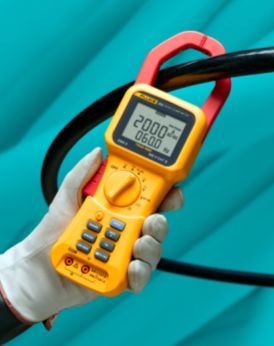
If you need to measure alternating current and even a significant one, as is done with the help current clamp, then here it is added to the scheme instrument current transformer… A current transformer has a secondary winding of many turns loaded with a resistor, and the primary winding is a single turn of wire simply passed through the window of the current transformer core. In fact, it turns out that the ammeter is connected to the secondary winding of the current transformer.
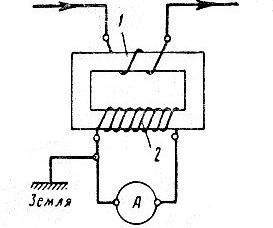
When making a current transformer for an AC ammeter, the turns and secondary resistor are calculated so that if the measured current is 1000 amperes, the secondary current does not exceed 0.5 amperes. The scale of the device is calibrated for the largest measured current flowing in the measured wire, that is, for the maximum current of the primary winding of the current transformer of the device.
An AC ammeter is never run when the secondary winding of the current transformer is open, as in this case the induced EMF will simply burn out the device and the ammeter will become dangerous to personnel.
The use of current transformers in ammeters allows safe measurement in high-voltage circuits, since the secondary winding connected directly to the measuring device is always reliably isolated.
Often, for greater safety, the body of the device is grounded, similar to the secondary winding of a measuring current transformer, so that even in the event of a breakdown of the insulation between the windings, personnel remain safe.
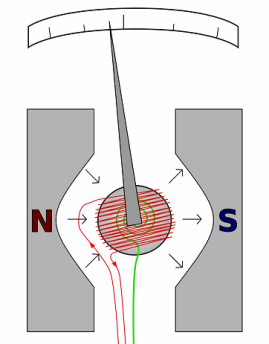
Magnetoelectric ammeters are used only in DC circuits. The coil of the measuring device connected to the arrow moves in the field of a permanent magnet. The magnetic field of the coil through which the current flows interacts with the magnetic field of the permanent magnet and the needle is deflected by an appropriate angle in one direction or another.
If such a device is included in the alternating current circuit and you try to make measurements, then nothing will happen, because the needle will simply oscillate with the frequency of the current near the zero position, and the device may burn out.
The problem is solved by using a correction circuit. The rectifier system will allow you to measure alternating current with a frequency of up to 10 kHz, provided that the current form is sinusoidal.
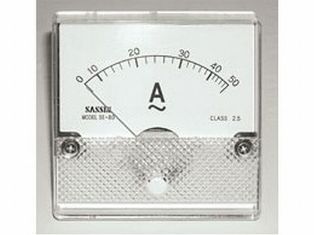
Analog ammeters have not lost their popularity to this day. They don't need battery power, the metered circuit gives them power. The arrow clearly shows the readings. But dials have a drawback — they are rather inert.
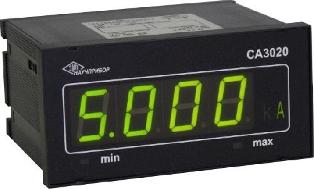
Digital ammeters contain an analog-to-digital converter, etc. LSD display only ready numbers showing the measurement result are displayed. Digital devices are free of inertia, have a high sampling frequency of the circuit, and the most modern expensive ammeters can give up to 1000 measurement results in one second. Minus one — you need an additional power source for such a device.
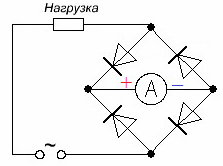
In conclusion, we note that if you do not have an ammeter for measuring alternating current at hand, but you have a direct current ammeter and you need to measure alternating current here and now, then the correction circuit will help you, which is simply added to the circuit and using conventional DC ammeter AC current can be measured without the need for a current transformer.
We hope this short article has helped you understand the difference between a DC ammeter and an AC ammeter and now you can measure even AC current with a DC ammeter without having to buy a current clamp. Of course, for measuring large currents, current clamps are indispensable, but in amateur practice sometimes simple and practical solutions are needed.
